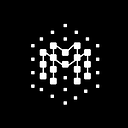A few months ago, we assisted our friends at Powerloom with their Testnet Incentive Program, which we co-ran with Coinlist. The program was designed to distribute 0.275% of Powerloom’s token supply to early supporters.
Powerloom required a dynamic point system that would allow these supporters to contribute and receive incentives proportionate to their contributions. We successfully executed this using Mercle’s Dynamic NFTs embedded with points & attestation.
During the two-month incentive phases 1 and 2, 10,620 users participated (with 2000 KYC participants ), with over 13k transactions on Polygon ZKEVM.
Read on to learn how we achieved this with our incentive layer.
What Is Powerloom?
Powerloom protocol is a composable data network for Web3 focused on completely decentralizing data sources for dApps and protocols. Unlike its peers in the market (Graph, Covalent), Powerloom focuses on enabling a network of participating peers to pass through data on state transmissions and event emissions across smart contracts.
The primary value proposition for consumers of Powerloom is the distributed approach to sourcing, parsing, and passing on data. It leaves considerably less of an attack vector for third-party party data sources to interfere with the accuracy of the information provided.
By utilizing data compositions on smaller, consensus-reached data units, Powerloom stands as a peer-validated and accurate information source, empowering rich data applications such as dashboards, bots, aggregators, and insights trackers.
Powerloom In A Nutshell:
Powerloom is analogous to a decentralized library catalog for blockchain data. The “snapshotters” are like librarians who continually observe shelves of books (smart contracts), cataloging additions or removals of books, changes in existing books, and notes added by readers in book margins (events).
Powerloom’s Incentivized Testnet Campaign
Powerloom Network dedicated a total of 0.275% of the network’s total token supply to reward participants for their active contributions to the incentivized testnet. Of this, 0.1% was awarded to the winners of Phase 1 of the campaign. This phase was designed to reward the Snapshotters, who form the backbone of the Powerloom Data network. You can learn more about Snapshotters here.
The remaining 0.175% of the total supply was set aside for Phase 2 of the campaign. This phase provided an opportunity for everyone to test the network by signalling on-chain data to be captured by Powerloom, and their efforts were incentivized with Token supply.
Here’s how they pulled it off.
Doing The Campaign In Phases
The incentive campaigns were executed in two phases, gradually increasing the incentives and participants for each phase.
Phase 1 — Duration: 30–45 days. Target: Snapshotters
Phase 2 — Duration: 30–45 days. Target: Broader Community
What’s to learn?
- Doing multiple smaller campaigns in phases of 1–2 months proves to be a better choice than the norm of a single campaign for incentivizing over a 6–8 month period.
- Distributing in phases helps the protocol to engage the community with education in a gradual way.
- It also helps with distribution and acquiring new community members.
Points Systems
A dynamic point system was implemented for Powerloom’s Testnet Incentive Phase 2 using Mercle’s dynamic NFTs since the focus was to reward the broader community and make sure rewards we distributed dynamically based on the contribution. All the participants were required to perform multiple quests on Polygon zkEVM and collect points to be eligible for token rewards later.
What’s to learn?
- Gamification helps with participation: a simple study shows that 83% of those who receive gamified training feel motivated, while 61% of those who receive non-gamified training feel bored and unproductive.
- Higher rewards for higher contribution: Powerloom brought in bigger rewards for the people with more XP, for which the core demand was to test out their testnet over zkEVM with the partnering dApps.
- Lower CAC: implementing a points system brings in lower CAC again due to its pseudo nature. you attach the maximum points to your core growth KPI on Mercle and understand the user behavior around them for adjusting your token allocations.
Referral System
As a part of the campaign, a referral system was also introduced to allow users to invite their friends and collect more points. This gave a huge push for increasing the participation for the program with 100 users inviting 500 more using their referral links.
Both the referred user and the person were rewarded points to incentivize. But only invited users who completed some bare minimum quests were qualified as successful referrals, making sure people don’t exploit the system to gain more rewards.
Conclusion
- Overall the campaign proved to be a success with over 40k users opting to participate. The winning users doing over 13k transactions on zkEVM.
- Powerloom distributing 10k+ dynamic SBTs. This strong initial community helped them do the next phase of their incentivized testnet themselves distributing over $1.5M worth of lite node SBTs.
- Testnet incentive programs should to built around a variety of users and in phases. The phases help you pick out your earliest adopters can incentivize them better.
- Pairing these phases with points that cross-communicate the previous contribution into new phases brings in a lower CAC as you keep considering your earliest users alongside your growth.
- Referral systems are a banger if we launch them with good planning and the right time of demand in the market. Powerloom brought in 2x users in their campaign by using a referral system.
Gamification works, you just need to build it for users to enjoy. Peace out.
In trust, we believe.
About Mercle
Mercle is an incentive network for the internet leveraging attestations. Facilitating early testnet, airdrop & rewards programs using dynamic NFTs and point systems.
